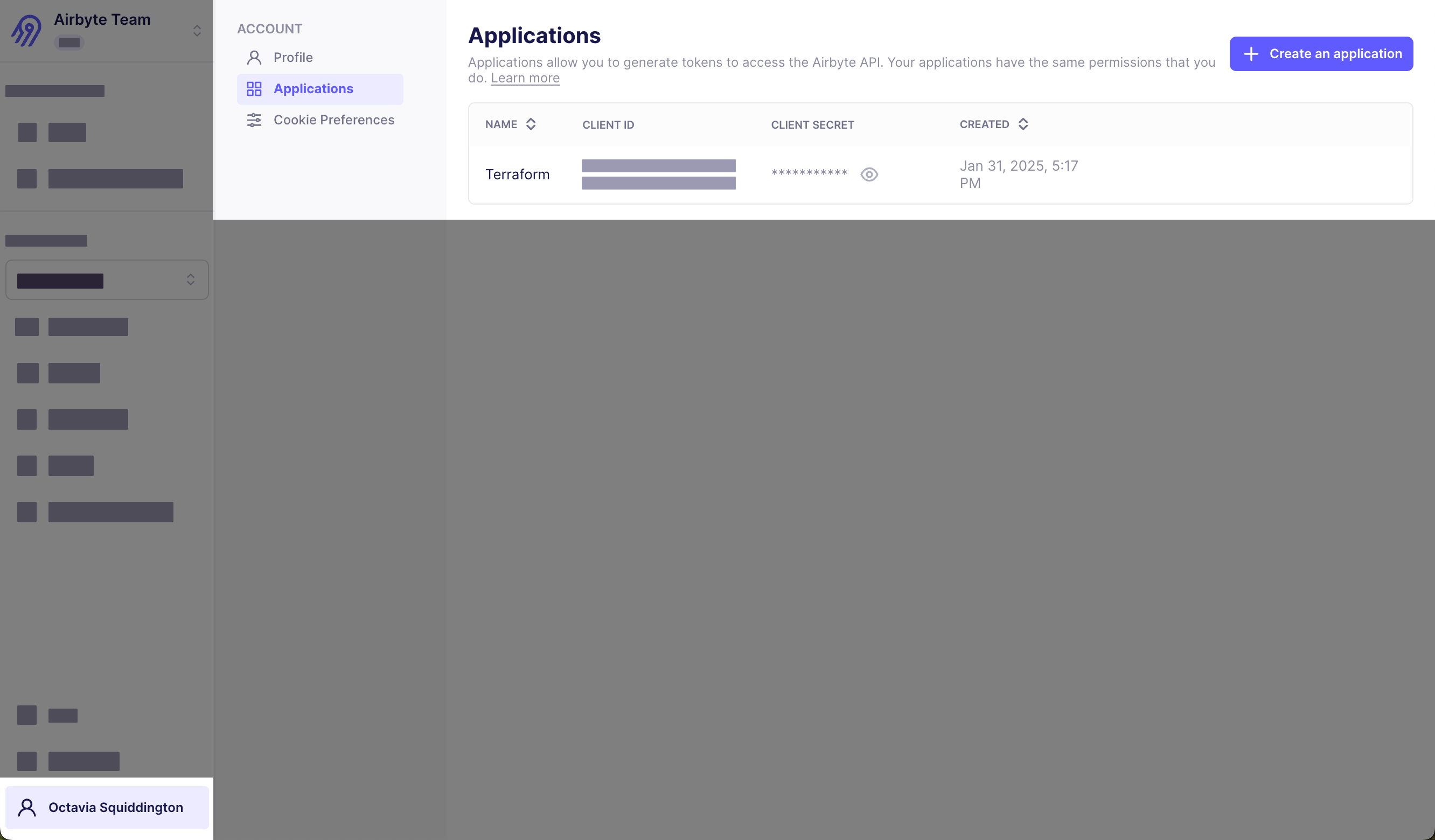Configuring API Access
The Airbyte API enables you to programmatically interact with Airbyte: create sources, destinations, run syncs, list workspaces, and much more.
Access to the API in Self-Managed Enterprise deployments is controlled via application keys. Applications keys are tied to individual users and their respective permissions. Prior to configuring API access, ensure you have an up and running deployment of Airbyte Self-Managed Enterprise that exposes the airbyte-server service. To do this, follow the steps in the implementation guide.
Step 1: Create an Application
-
In the navigation bar, click your user name > User settings > Applications.
-
Click Create an application.
-
Give you application a descriptive name.
-
Copy your
client_idandclient_secretcredentials. You can exchange them anytime to get an access token to make requests to the API. These credentials don't expire, but you can delete them at any time.

Step 2: Obtain an Access Token
With your client_id and client_secret in hand, make the following API request, replacing <YOUR_WEBAPP_URL> with the URL you use to access the Airbyte UI:
POST <YOUR_WEBAPP_URL>/api/v1/applications/token
Ensure the following JSON Body is attached to the request, populated with your client_id and client_secret:
{ "client_id": "", "client_secret": "" }
The API response should provide an access_token which is a Bearer Token valid for 60 minutes that can be used to make requests to the API. Once your access_token expires, you may make a new request to the applications/token endpoint to get a new token.
Step 3: Operate Airbyte via API
You may now make requests to any endpoint documented in our Airbyte API Reference. For example, you may use the List workspaces endpoint to verify the list of workspaces in your organization. Ensure to include your access_token as a Bearer Token in your request.:
GET <YOUR_WEBAPP_URL>/api/public/v1/workspaces
Expect a response like the following:
{
"data": [
{
"workspaceId": "b5367aab-9d68-4fea-800f-0000000000",
"name": "Finance Team",
"dataResidency": "auto"
},
{
"workspaceId": "b5367aab-9d68-4fea-800f-0000000001",
"name": "Analytics Team",
"dataResidency": "auto"
}
]
}
To go further, you may use our Python and Java SDKs to make API requests directly in code, or our Terraform Provider (which uses the Airbyte API) to declare your Airbyte configuration as infrastructure.